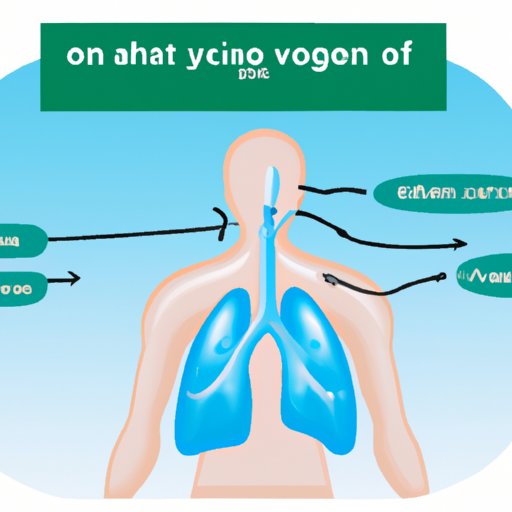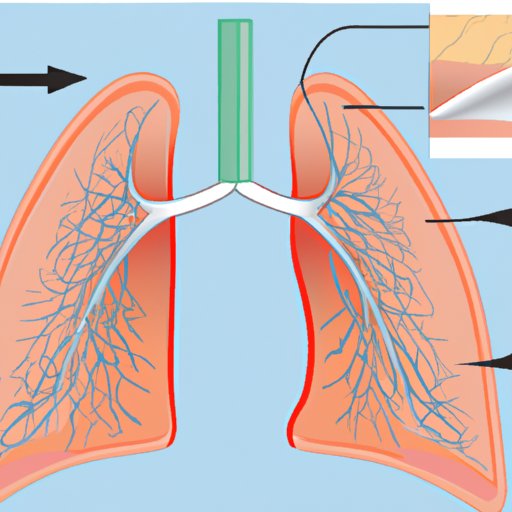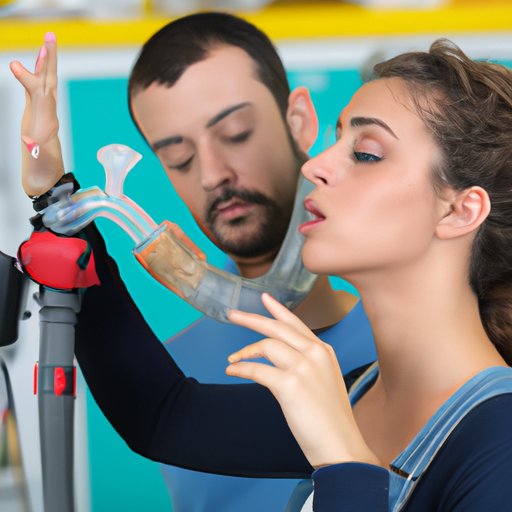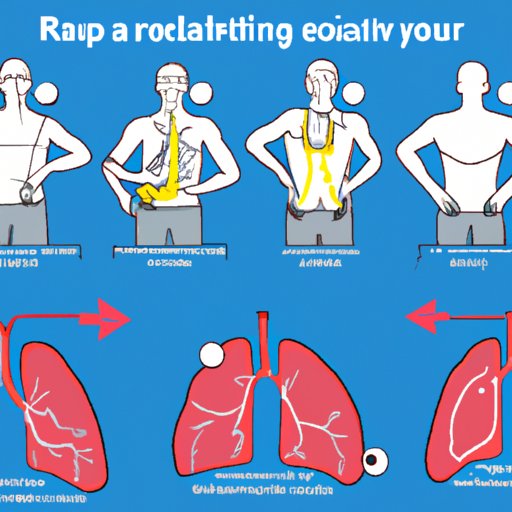Introduction
Breathing is an essential part of life. Every moment of every day, we rely on our lungs to do their job and provide us with the oxygen we need to survive. But how does breathing work? In this article, we’ll explore the physiology and science behind human respiration, from the anatomy of the respiratory system to the mechanics of inhalation and exhalation.
Exploring the Physiology of Breathing
The respiratory system is made up of several organs and structures that work together to enable us to breathe. The most important organ in the system is the lungs. The lungs are responsible for taking in oxygen from the air and releasing carbon dioxide into the atmosphere. Other organs in the respiratory system include the nose, mouth, trachea, bronchi, and diaphragm. These organs work together to move air through the body and facilitate gas exchange.
The Science Behind Inhaling and Exhaling
In order to understand how breathing works, it’s important to first define inhalation and exhalation. Inhalation is the process of taking in air, while exhalation is the process of releasing air from the lungs. When we inhale, we draw air into our lungs, and when we exhale, we expel air from our lungs.
The exchange of air in the lungs is facilitated by the movement of air through the trachea and bronchi. Air enters the lungs through the trachea and then travels to the alveoli, which are small, sac-like structures located at the end of the bronchi. The alveoli are where oxygen and carbon dioxide are exchanged between the lungs and the bloodstream.

The Function of the Respiratory System
The primary function of the respiratory system is to move oxygen into the body and remove carbon dioxide from the body. This process is known as gas exchange. Oxygen enters the body through the lungs and is carried to the cells via the bloodstream. Carbon dioxide is produced by the cells and is then transported back to the lungs where it is expelled from the body.

How Oxygen Enters and Leaves the Body
The process of moving oxygen into and out of the body is known as ventilation. Ventilation occurs when the lungs expand and contract, allowing air to move through the trachea and bronchi. During inhalation, air is drawn into the lungs and oxygen is taken in. During exhalation, air is expelled from the lungs and carbon dioxide is released.
The movement of oxygen through the tissues is aided by the diaphragm and rib cage. The diaphragm is a dome-shaped muscle located at the base of the lungs. When it contracts, it causes the lungs to expand, allowing air to enter. The rib cage also plays a role in ventilation; when it expands, it increases the capacity of the lungs and allows air to flow freely.

The Role of the Lungs in Respiration
The lungs play an important role in respiration. They are responsible for taking in oxygen and releasing carbon dioxide. Oxygen enters the lungs through the trachea and is then transferred to the alveoli, where it is absorbed into the bloodstream. Carbon dioxide is produced by the cells and is then transported back to the lungs where it is expelled from the body.
The alveoli are also important for maintaining proper levels of oxygen and carbon dioxide in the blood. They are lined with tiny capillaries, which allow for the exchange of gases between the bloodstream and the lungs. As oxygen enters the alveoli, it is absorbed into the bloodstream, and as carbon dioxide is released from the cells, it is expelled from the lungs.
Understanding the Process of Ventilation
Ventilation is the process of moving air in and out of the lungs. It is controlled by the diaphragm and the rib cage. The diaphragm is a dome-shaped muscle located at the base of the lungs. When it contracts, it causes the lungs to expand, allowing air to enter. The rib cage also plays a role in ventilation; when it expands, it increases the capacity of the lungs and allows air to flow freely.
Inspiration and expiration are two types of ventilation. Inspiration is the act of taking in air, while expiration is the act of releasing air from the lungs. During inspiration, the diaphragm contracts and the rib cage expands, allowing air to enter the lungs. During expiration, the diaphragm relaxes and the rib cage contracts, forcing air out of the lungs.

Examining the Mechanics of Human Breathing
The mechanics of human breathing have been studied extensively. Research has shown that the rate and depth of breathing can vary depending on a person’s activity level and emotional state. For example, during exercise, a person’s breathing rate will increase in order to meet the demands of the activity. Similarly, during times of stress or anxiety, a person’s breathing rate will increase as the body attempts to cope with the situation.
Research has also shown that regular physical activity can improve lung function and help to reduce the symptoms of asthma and other respiratory illnesses. Regular exercise can strengthen the muscles used for breathing, such as the diaphragm and the rib cage, and can also improve the efficiency of gas exchange in the lungs.
Conclusion
Breathing is an essential part of life, and understanding how it works is key to maintaining good health and well-being. In this article, we explored the physiology and science behind human respiration, from the anatomy of the respiratory system to the mechanics of inhalation and exhalation. We discussed the role of the lungs in respiration, the effects of exercise on breathing, and the mechanics of ventilation. Hopefully, this article has provided you with a better understanding of how breathing works and the importance of keeping your lungs healthy.
To learn more about the physiology and mechanics of breathing, check out the following resources:
- American Lung Association – How Lungs Work
- National Center for Biotechnology Information – Ventilation and Gas Exchange
-
(Note: Is this article not meeting your expectations? Do you have knowledge or insights to share? Unlock new opportunities and expand your reach by joining our authors team. Click Registration to join us and share your expertise with our readers.)
